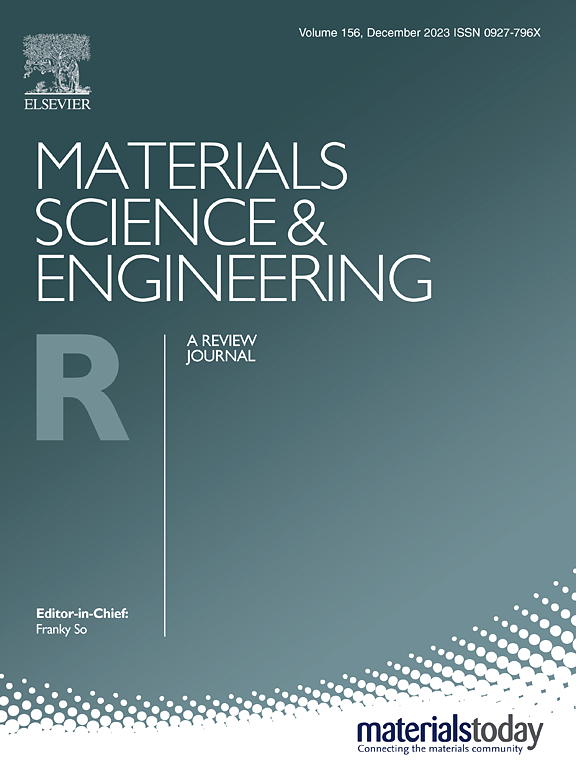Interfacial and solvent dehydrogenation engineering enables long-life high-voltage lithium-ion batteries
IF 31.6
1区 材料科学
Q1 MATERIALS SCIENCE, MULTIDISCIPLINARY
引用次数: 0
Abstract
High-voltage lithium-ion batteries (LIBs) using LiNi0.8Mn0.1Co0.1O2 (NCM811) cathode materials present a promising avenue for increasing energy density. However, achieving stable operation at elevated voltages is hindered by chemical instability in ethylene carbonate (EC)-based electrolytes, leading to parasitic interfacial reactions. Herein, we introduce 2-hydroxy-5-nitro-3-(trifluoromethyl) pyridine (HNTFP) as a multifunctional electrolyte additive to mitigate EC dehydrogenation and minimize interfacial side reactions. Leveraging the unique functional groups of HNTFP (NO2, CF3, and C![]() O), we demonstrate the formation of a robust hybrid/inorganic cathode electrolyte interphase (CEI) on high-voltage cathodes and a fluorine-rich solid electrolyte interphase (SEI) on graphite anodes. These interphases enable 4.5 V-charged NCM811||graphite full cells to achieve a capacity retention of 92 % over 500 cycles, while commercial 1 Ah pouch cells retain 89 % over 1000 cycles. This study provides a fresh perspective on electrolyte additive design and underscores the transformative potential of HNTFP in enabling long-life, high-voltage LIBs with superior stability and performance.
O), we demonstrate the formation of a robust hybrid/inorganic cathode electrolyte interphase (CEI) on high-voltage cathodes and a fluorine-rich solid electrolyte interphase (SEI) on graphite anodes. These interphases enable 4.5 V-charged NCM811||graphite full cells to achieve a capacity retention of 92 % over 500 cycles, while commercial 1 Ah pouch cells retain 89 % over 1000 cycles. This study provides a fresh perspective on electrolyte additive design and underscores the transformative potential of HNTFP in enabling long-life, high-voltage LIBs with superior stability and performance.
界面和溶剂脱氢工程实现了长寿命高压锂离子电池
使用LiNi0.8Mn0.1Co0.1O2 (NCM811)正极材料的高压锂离子电池(LIBs)为提高能量密度提供了一条有前途的途径。然而,基于碳酸乙烯(EC)的电解质的化学不稳定性阻碍了在高电压下实现稳定运行,从而导致寄生界面反应。在此,我们引入2-羟基-5-硝基-3-(三氟甲基)吡啶(HNTFP)作为多功能电解质添加剂,以减轻EC脱氢和减少界面副反应。利用HNTFP独特的官能团(NO2, CF3和CO),我们证明了在高压阴极上形成坚固的混合/无机阴极电解质界面(CEI),在石墨阳极上形成富氟固体电解质界面(SEI)。这些界面使4.5 v充电的NCM811||石墨全电池在500次循环中保持92% %的容量,而商用1 Ah袋电池在1000次循环中保持89% %的容量。这项研究为电解质添加剂设计提供了一个新的视角,并强调了HNTFP在实现具有卓越稳定性和性能的长寿命、高压锂离子电池方面的变革潜力。
本文章由计算机程序翻译,如有差异,请以英文原文为准。
求助全文
约1分钟内获得全文
求助全文
来源期刊

Materials Science and Engineering: R: Reports
工程技术-材料科学:综合
CiteScore
60.50
自引率
0.30%
发文量
19
审稿时长
34 days
期刊介绍:
Materials Science & Engineering R: Reports is a journal that covers a wide range of topics in the field of materials science and engineering. It publishes both experimental and theoretical research papers, providing background information and critical assessments on various topics. The journal aims to publish high-quality and novel research papers and reviews.
The subject areas covered by the journal include Materials Science (General), Electronic Materials, Optical Materials, and Magnetic Materials. In addition to regular issues, the journal also publishes special issues on key themes in the field of materials science, including Energy Materials, Materials for Health, Materials Discovery, Innovation for High Value Manufacturing, and Sustainable Materials development.
 求助内容:
求助内容: 应助结果提醒方式:
应助结果提醒方式:


